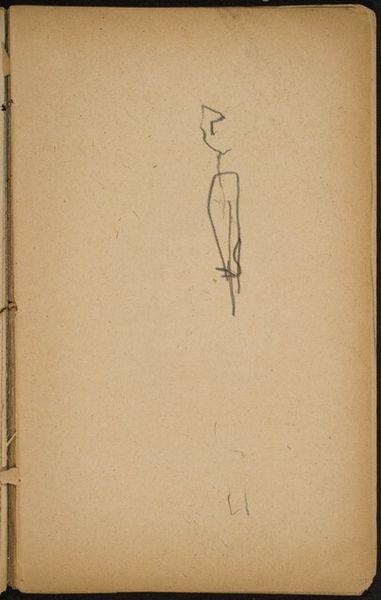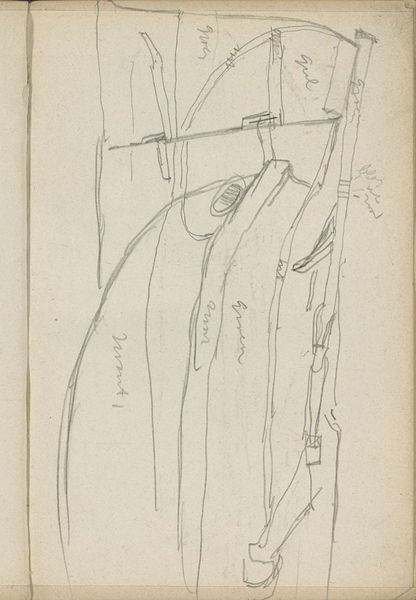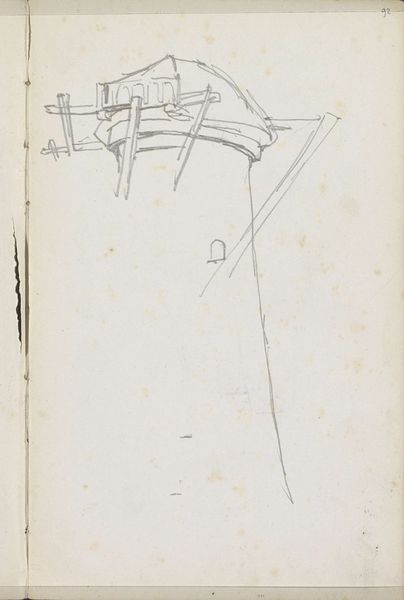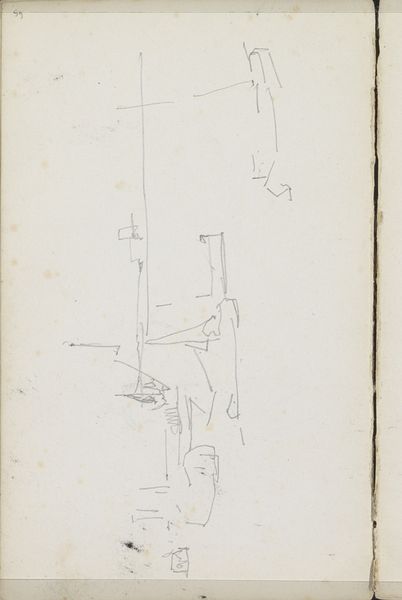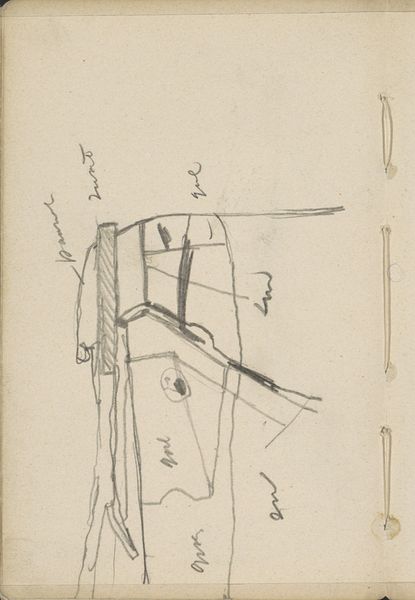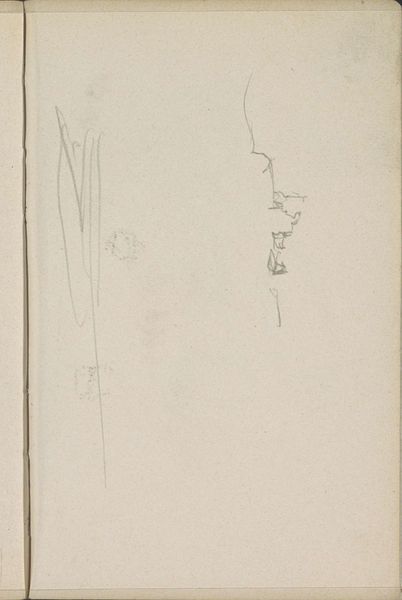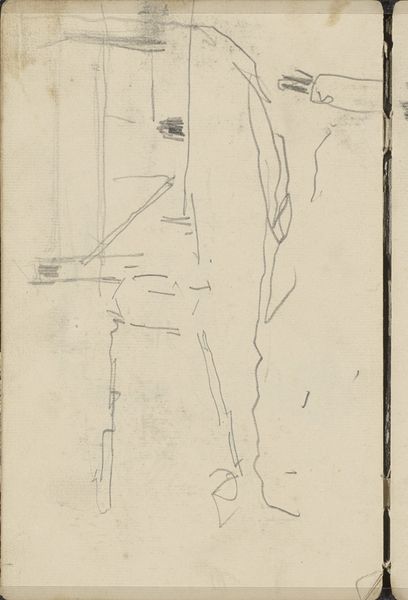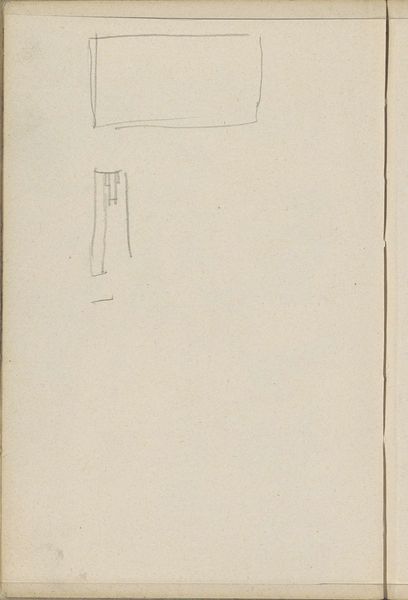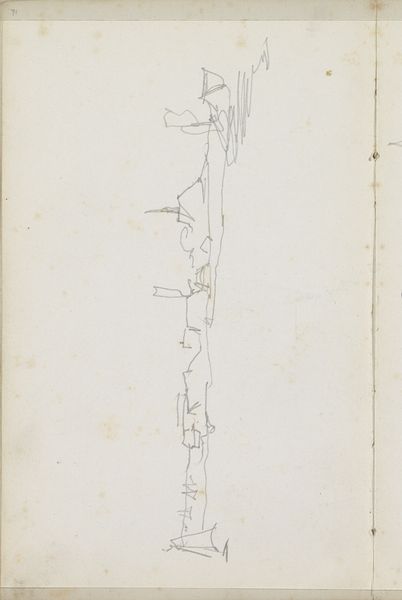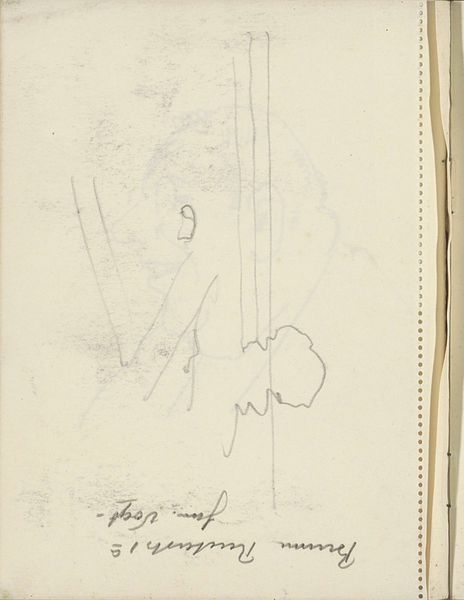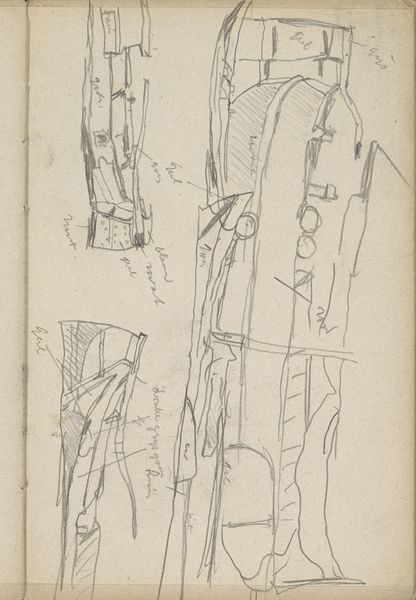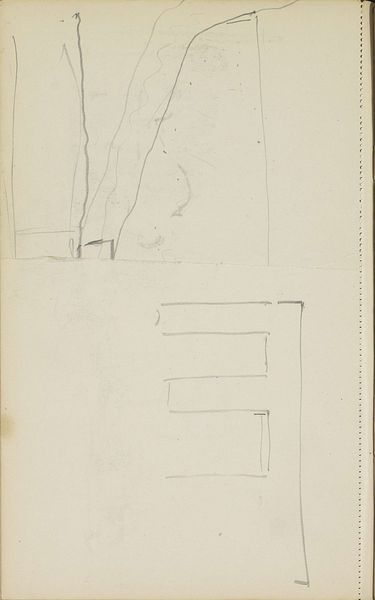
drawing, paper, pencil
#
drawing
#
paper
#
form
#
geometric
#
pencil
Copyright: Rijks Museum: Open Domain
Curator: Here we have Carel Adolph Lion Cachet's "Pilaar," a pencil drawing on paper, circa 1906, now held at the Rijksmuseum. The title translates to "pillar," doesn't it? Editor: Yes, and my immediate impression is that it feels very tentative, almost like a sketch found in someone's notebook. The lines are spare, almost hesitant, and the light pencil on paper gives it a transient quality. Curator: And in Cachet's time, this "tentative" quality could be seen as revolutionary. His work, even a simple study like this, challenges the conventions of formal representation by focusing on essence rather than detail. Given his political leanings towards socialism and anarchism, do you think this style resonates with the socio-political undercurrents of the early 20th century, a move away from strict academic forms towards something more raw? Editor: An interesting point. Structurally speaking, the geometric and organic elements clash in a very subtle, understated manner. The rigid lines forming the pillar’s structure meet that fluid, almost vegetal design etched along the column – a captivating interplay of shape. I’m thinking about the relationship of these lines as signs, a semiotic investigation. Curator: Indeed, let's think more critically about the pillars being presented as "art" in its early stages during a period of social and political turmoil. In dismantling what he had observed from society, he then reconstructs by offering "a moment" of architectural structure which presents a silent commentary on authority and class. In this moment, Cachet opens up discussion and dissent, challenging hierarchical standards that could very much define both early twentieth-century art and societal structures. Editor: It's a wonderful suggestion. In the grand scheme, there appears to be a conscious stripping of form, leading me to assume there is so much power in simplifying an idea down to only its basic visual component. The texture of pencil on paper enhances this essence to its rudimentary quality, making it intriguing. Curator: I see his art not just as explorations of forms but as interventions, engaging directly with the politics of his time, a tangible representation of change, social commentary and engagement of art as defiance. Editor: Absolutely. Well, it's given me plenty to think about concerning how we approach such stripped down imagery—Cachet's composition becomes this compelling field of inquiry for artistic intent and social-political narrative. Curator: I am also considering that very strongly myself. The dialogue between the artwork’s materiality and its subject certainly provokes thoughtful questions about society.
Comments
No comments
Be the first to comment and join the conversation on the ultimate creative platform.
